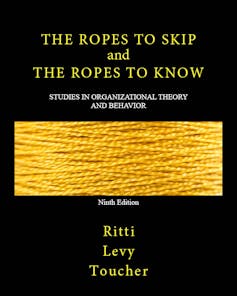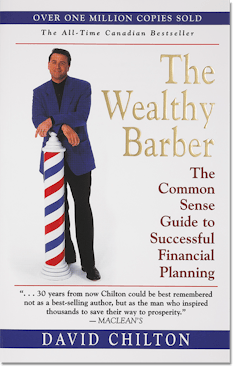COVID-19 has stretched budgets thin across the country, but many women have lost tons of money due to losing their jobs or having to take fewer hours to work at home to care for children. Women in particular need to make more money thanks to the struggles of the pandemic.
Fortunately, the Daughters of Sheba Foundation is here to detail a number of ways that at-home working women or mothers can still make money.
Passive Income Streams
Want to earn money while relaxing or taking care of your family? In that case, passive income is the strategy for you.
Passive income streams allow you to earn money through advertising or other methods over time, usually requiring a minimum of daily effort. Passive income stream ideas include:
- Making your own blog network and advertising on the network
- Marketing through affiliate marketing to earn commissions on sales of specific products
- Teaching online courses and selling the courses repeatedly
- Making YouTube videos or other content and earning income through ads
Form a Company
Of course, you can also make money by forming your own company and selling products or services! For many women, this is the entrepreneurial ideal. If you lost your job, consider it a sign from the universe that you need to build your own company you’ll never be fired from.
If you decide to make a business to make money, consider starting your business as an LLC instead of a sole proprietorship. Limited liability companies get better tax breaks and may allow you to expand your company if it really takes off. Just make sure your state doesn’t have any surprising rules regarding LLCs before you file your paperwork.
No matter the business you decide to start, you’ll need a great marketing campaign to spread the word about your brand far and wide. Hire a great web designer to create attractive online ads and a fantastic-looking website with excellent images. You can even collaborate with them and send JPG files back and forth as you figure out how the site will look and what images are best for your online ads.
Just don’t forget to use a handy JPG-to-PDF converter – this will allow you to compress JPG files when you email them but recover the images’ full quality when downloaded.
You might also consider going back to school to acquire a business degree, such as an MBA or Master of Business Administration. Such degrees give you extra business management skills and may give you the knowledge and tools you need to thrive in any economic environment. You may make more money online with a business degree since you’ll make smarter decisions when forming a company or engaging in other capitalist ventures.
 Side Hustles for Working Women
Side Hustles for Working Women
If you’re not interested in making a permanent business, you can still make money online through side hustles. There is plenty of online side-hustle opportunities these days, including but not limited to:
- Answering surveys or questions for small fees
- Working as a digital assistant for a company
- Teaching courses or teaching English to foreigners
- Selling photographs online as stock photos
Job Boards and Freelancing
If you’re a seasoned professional in one or more fields, consider signing up for a job board and becoming a freelancer. Freelance photographers, writers, video editors, and oftentimes make more money than their counterparts in traditional companies.
Setting Up Your Office
If your goal is to work from home, do yourself a huge favour and dedicate part of your home to being an office. It should be an area that’s comfortable but distraction-free. If that requires some renovations, don’t worry – as an added benefit, such improvements also boost your home’s appraisal value!
Women Are Winning, Even with COVID
All in all, the COVID-19 pandemic has been tough for women. But women just like you can still make money online to pay for bills, cover family expenses, and get back on their financial feet in no time. Consider trying each of these ideas at least once to see which you prefer!
Credit
Leslie Campos created Wellparents.com to offer help and resources to busy parents who want to stay healthy and active. Her site offers parents a variety of information from stress-busters to exercise ideas to healthy eating tips. In her free time, she enjoys yoga, CrossFit and watching the Great British Baking Show.”




 Why It Matters – Support For Women
Why It Matters – Support For Women Water At The Centre of Climate Change Strategies
Water At The Centre of Climate Change Strategies
 Why It Matters
Why It Matters What Forgiveness Is Not?
What Forgiveness Is Not? Is Intuition Any Good?
Is Intuition Any Good? In a contrasting body of work, decision psychologist
In a contrasting body of work, decision psychologist  Given what Americans say about their earnings, you’d think many would be bellowing like Tidwell. From Jan. 19 to Feb. 2, 2022, my research assistant and I partnered with Angus Reid Global to field a national survey of 2,000 working Americans. We asked: Do you feel that the income from your job alone is enough to meet your family’s usual monthly expenses and bills?
Given what Americans say about their earnings, you’d think many would be bellowing like Tidwell. From Jan. 19 to Feb. 2, 2022, my research assistant and I partnered with Angus Reid Global to field a national survey of 2,000 working Americans. We asked: Do you feel that the income from your job alone is enough to meet your family’s usual monthly expenses and bills? And there are worse stories. The horror story of women who never make it to the workplace or are booted out as soon as people discover that they are too different. Sadly, we are talking about the same group of women here – those who may tick more than one of the different boxes – but it may also simply be women who look “too old”, “too young”, “too fat” or “too ugly”, in other words, women who fail to look the part.
And there are worse stories. The horror story of women who never make it to the workplace or are booted out as soon as people discover that they are too different. Sadly, we are talking about the same group of women here – those who may tick more than one of the different boxes – but it may also simply be women who look “too old”, “too young”, “too fat” or “too ugly”, in other words, women who fail to look the part.